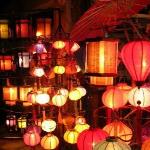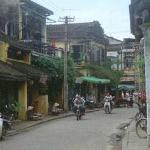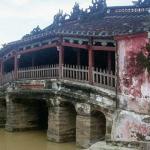ABOUT HOI AN
Hội An is a small city on the coast of the South China Sea and the South-central coast of Vietnam. It is located in the Quảng Nam province and is home to approximately 88,000 inhabitants.
The city possessed the largest harbor in Southeast Asia in the 1st Century and was known as Lâm Ấp Phố (Champa City). Between the 7th and 10th centuries the Champas controlled the spice trade and with this came tremendous wealth. The boats used in Hoi An today have the same hull shape as those used by the Champas for ocean voyages.
The former harbor town of the Champa people at the estuary of the Thu Bon River was an important Vietnamese trading center in the 16th and 17th centuries, where Chinese, Japanese, Dutch and Indians settled. During this period of the China trade, the town was called Hai Pho (Seaside Town). Originally, Hai Pho was a divided town with the Japanese settlement across the "Japanese Bridge" (16th-17th century). The bridge (Chùa cầu) is a unique covered structure built by the Japanese. It is the only known covered bridge with a Buddhist pagoda attached to one side.
In 1999, the old town was declared a World Heritage site by UNESCO. It is a well-preserved example of a Southeast Asian trading port of the 15th to 19th centuries, with buildings that display a unique blend of local and foreign influences.
Today, Hội An is still a small city, but one that attracts a fair number of tourists. Many visit for the numerous art and craft shops and tailors, who produce made‑to-measure clothes for a fraction of the western price. Several internet cafés, bars and restaurants have also opened along the riverfront.



